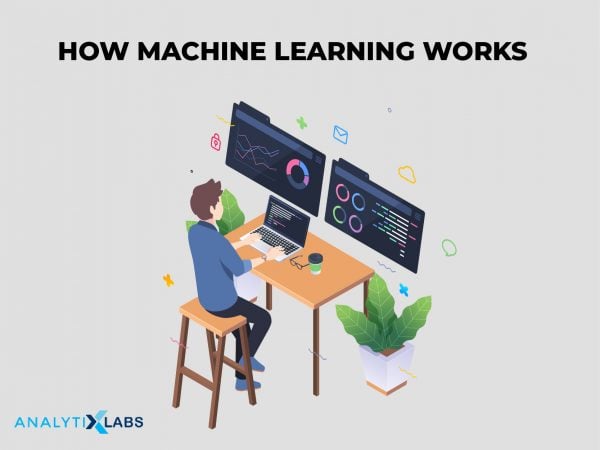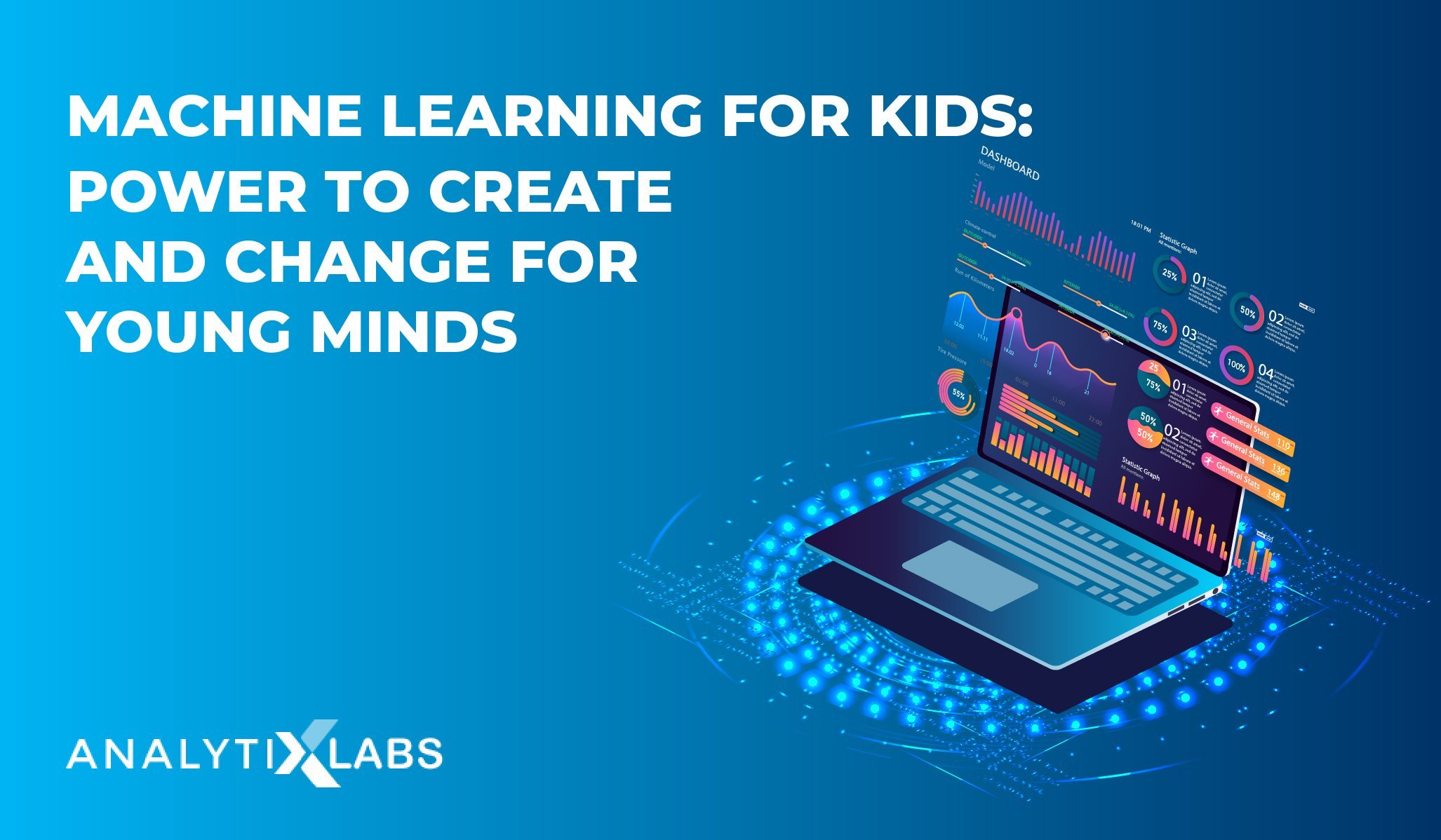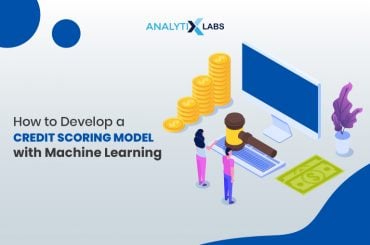The educational institutes across nations have different plans, according to which they begin the cycle of imparting technical wisdom to kids. But the lines are getting blurry, and today kids as small as age seven are learning to code.
To move this trend forward, kids are now being taught newer technological concepts like ML and AI, branded as Machine Learning for kids.
Here, we will cover different aspects of a newly introduced form of learning. The basic idea is to explore different areas of Machines Learning from the perspective of learning for kids.
Related: What is Machine Learning?
Introduction:
Okay, it isn’t coding a technically challenging topic that we are forcing kids to learn algorithms. Such thoughts might come across your mind while you are reading this, but have you observed the way kids are now using the internet and fast becoming tech-savvy.
Now, the question is, are you willing to let your kid scroll down the Facebook feed page or go onto the rabbit hole of Youtube without learning anything. Or you could leave them to spend a few hours on a smartphone and learn something that will prepare them for a technology-driven tomorrow. Also, allowing kids to interact with those gadgets productively will make them realize the real importance of technology.
Brand snippet:
Analytixlab has been a pioneer in transforming educational courses involving Data Science and AI. We have been in this field for nearly a decade now, and our hallmark has been rolling out industry ready professionals out raw students courtesy of the training session led by the best in the business.
Machine Definition for Kids
Machine definition for kids is any device that makes the jobs of humans easier. It can be anything ranging from the cell phone to a motor engine. Now, the question is how we teach young minds about machines from the lenses of computers. Are we setting a precedent that we are making machines that work around smarter men, or are we making more intelligent machines that make human beings dependent?
Today’s young kids, who will tomorrow grow up as adults, will realize the symbiotic relationship between men and machines. But can’t we begin now? Currently, our role is to prepare their minds for such relationships, especially with data & algorithms ruling the charts shortly. The only way it seems to make them future-ready is to teach them about machine learning, AI, and other data-driven technologies.
Machine Learning for Kids
As mentioned earlier, the only way to bring the kids closer to the data revolution is to introduce machine learning for kids. But there has to be a method to this wackiness, which some people perceive it to be.
If you are from a technical background who has a son, or daughter, or a nephew or a niece, they are curious by nature and will have questions ready for you regarding what you do. At that moment, you can choose to kill the interest and say you will know as you grow up. But stop and ask yourself, are you doing the right thing?
In your homes, you can begin the lessons of machine learning for kids at a rudimentary level, to start with. It might give you a proper idea of the kid’s capability to grasp new stuff. Once you are confident, you can use various online tools to create a teaching environment that helps the kids learn quickly.
In fact, in middle school, the children are now being taught Python. So they are no stranger to the world of semicolons, dashes, and ellipses. Some of the top names like Google and MIT media lab have introduced two popular platforms to learn coding for the young kids: Blockly and Scratch, respectively.
Continuing this trend, the two prominent names are dabbling with creating platforms for fostering learning in the field of Artificial Intelligence for kids and machine learning. In 2017, Dale Lane, an artificial intelligence developer from IBM, developed a platform that used the power of IBM Watson to create an environment for kids to learn algorithms in an easy block structure.

The two key concepts that make teaching machine learning easier include neurons and algorithms. A proper understanding of both can help children to follow the story of machine learning quickly.
Neurons are small elements of neural networks that have genesis from the human brain. It is a way to help the machines mimic the human brain.
At its core, algorithms are a specific set of instructions that take in the input and pass it on to the instruction loop to provide an output. By joining these two concepts of neurons and algorithms, we can understand how machine learning works.
The loop of machine learning begins and ends with training algorithms to make the right decision without being pre-programmed with code lines. So, the algorithm is trained with the neurons fed with data inputs that are modulated for their weights and biases until the moment an ideal output is achieved. Thus, while neurons do all the thinking on the data, it is the algorithms that channel the decision.
Again you need to understand that neural networks and algorithms are sometimes quite interchangeably used, so confusion is imminent. You need to understand the concepts at its core, and one right way to understand that would be to acquaint yourself with the different types of ways machine learning works: supervised and unsupervised learning.
Machine Learning Practical Examples
The application of machine learning is ubiquitous. The coming decade will see the pathbreaking application of machine learning in medicine, healthcare, space research, and many more such fields. But let us discuss the application which we see right now.
1. Smart cars
If you haven’t heard of Tesla and other four-wheelers applying machine learning technologies to achieve some incredible feat, then you might be living under a rock. Today, smart cars are fed with technological developments that allow them to auto-detect the objects and apply brakes.
Think of its large-scale implication; how many lives can be saved. It is just a single application of ML in cars. Various developments are coming your way, so sit tight and learn.
2. Navigating the Complexities of web search
As per a statistical report of 2019, nearly 3.5 billion internet searches are made in a day. Also, remember that for every keyword search, there may be another million or billion search results. Now, you can imagine the dynamite work that goes into providing you with the right information.
Indeed, such assimilation is no humans task, then who does it for you? Well, there’s some advanced level of ML and AI that is at work here. They recognize a pattern of individual search and serve results accordingly.
3. Automatic Recommendation system
Another important real-life example of machine learning that is shaping the entertainment industry is automatic recommendation systems. Now, have you ever observed how your Youtube videos get auto-populated with the search phrases for videos you want to see? Or your homepage of youtube shows up content that you have been watching for a couple of days now. All of this is made possible with machine learning.
Now, if you have watched ‘Dark’ on Netflix, you might see the recommender system at work in the section ‘shows you might like’ as it pulls-up shows of a similar genre. It is machine learning that is serving you the entertainment goals.
Related: 15 Real-World Applications of Artificial Intelligence
Algorithm example for kids
The most basic example of an Algorithm for kids would be the simple act of counting the number of students in their class. So, when a kid counts the number of students, he is applying an algorithm that goes something like this. For every person I point fingers at, an entry for a student will be registered, and the counter will increase, adding up the tally for students.
Let us understand it in the form of Pseudocode. So, if N=0, this initial number of students from, where counting starts for every counter, the value of N changes from N= N+1, which includes the kid itself. If there is one other student, then N=N+1 will give an output for 2, which is the number of students in a class.
Conclusion:
Some of the researchers at NYU and MIT are now trying to map a young baby’s brain to see how they learn over some time and how the same can be applied to machines using the neural network. This is one side of the loop where machines learn from kids, but the real question is are kids learning about the machines or, more specifically, these evolving technologies like ML and AI. The sooner we act to complete the loop, the better our chances are to navigate the new world problems.
FAQs:
- How do you explain machine learning to a child?
Teaching machine learning concepts to kids must be done in a simplified manner; we have a simple human definition ready for you.
Machine Learning is an application of AI which allows the machines to learn from data and make decisions. There is no prior coding done to train machines.
- What is machine learning for beginners?
Defining Machine learning for kids and beginners are two different things. For beginners, we suggest you go with a more formal definition.
Machine Learning is a process where tons of structured and unstructured data are fed into a system to fine-tune algorithms so that they can act as per the desired outcomes at any stage.
- What is AI for kids?
Use the example of Siri, while explaining to the kids about AI, it will be much easier for them to understand as in most houses Siri has become an AI companion. However, you can use the below definition too.
- Defining Artificial Intelligence for kids
Artificial Intelligence is the process of mirroring human intelligence to computers with the use of neural networks. Bit technical, but that’s the way to go.




![Deep Learning Interview Guide: Top 50+ Deep Learning Interview Questions [With Answers]](https://www.analytixlabs.co.in/blog/wp-content/uploads/2021/11/1-8.jpg)



